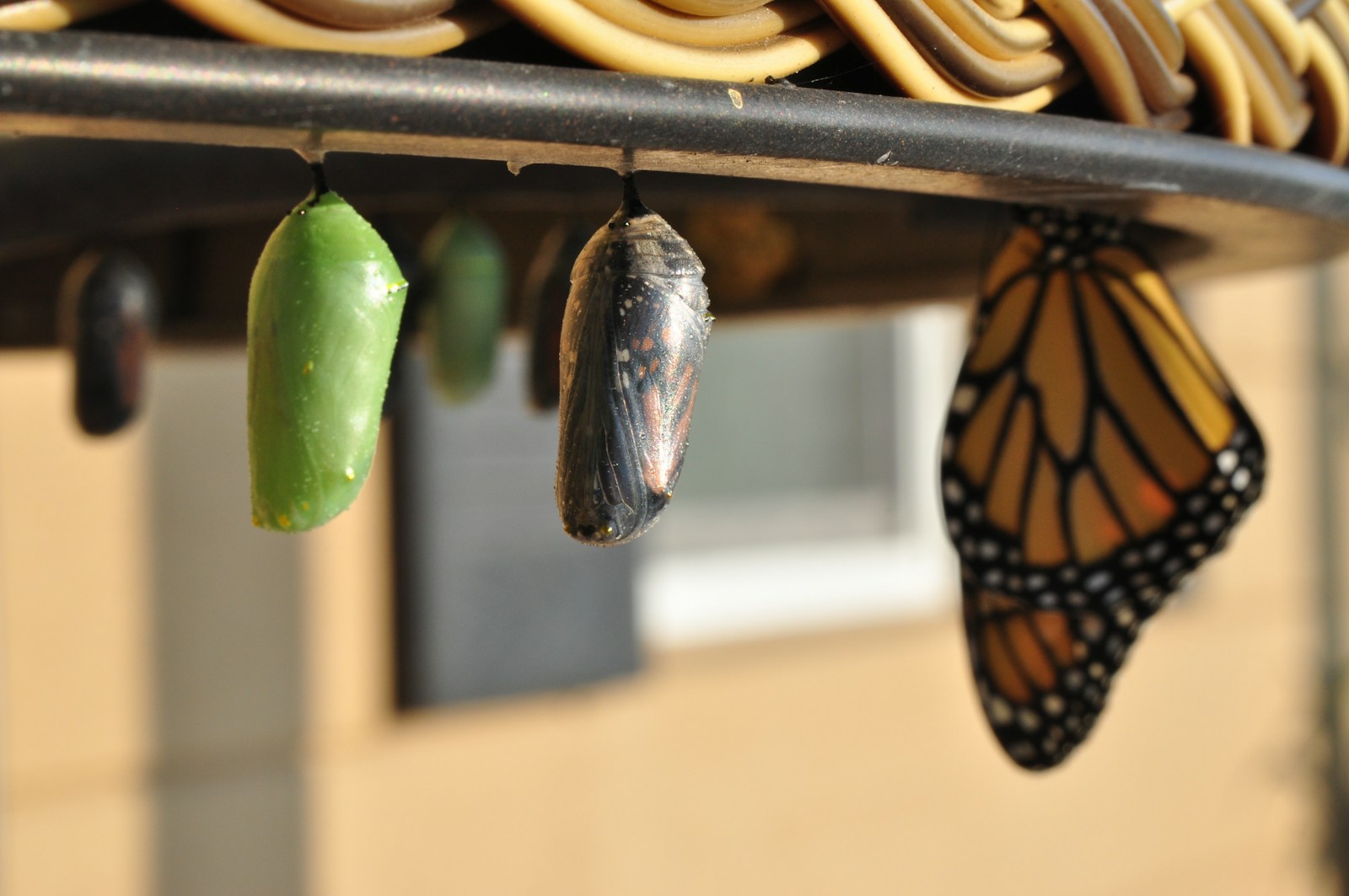Convergent evolution is a fascinating phenomenon where organisms that are not closely related independently evolve similar traits. This happens because they are subjected to comparable environmental pressures and natural selection processes. For example, the wings of bats and birds have similar structures suited for flight, but these animals do not share a close common ancestor with wings. This illustrates that similar problems in nature often lead to similar solutions, even across different lineages.
Convergent Evolution
| Feature | Example 1 | Example 2 | Explanation |
|---|---|---|---|
| Body Shape | Sharks (fish) | Dolphins (mammals) | Both evolved streamlined, hydrodynamic bodies for efficient movement in water, despite distant ancestry. |
| Wings | Birds | Bats (mammals) | Both developed wings for powered flight, although the underlying bone structures differ. |
| Eyes | Humans (mammals) | Octopus (mollusk) | Both evolved complex, camera-like eyes for sharp vision, despite very different evolutionary paths. |
| Echolocation | Bats (mammals) | Dolphins (mammals) | Both use echolocation to navigate and find prey in low-light conditions. |
| Body Armor | Pangolins (mammals) | Armadillos (mammals) | Both have protective scales though they are not closely related. |
| Succulence | Cacti (Americas) | Euphorbia (Africa) | Both evolved fleshy water-storing tissues adapted to arid environments. |
Key Points about Convergent Evolution
- Driven by Similar Environments: Organisms facing similar environmental pressures may evolve similar features, even with different starting points.
- Analogous Structures: Convergent evolution leads to analogous structures, which have similar function but different evolutionary origins.
- Not Due to Shared Ancestry: Distantly related organisms can exhibit convergent features that were not present in their common ancestors.
Despite the differences in their genetic heritage, species can end up looking or behaving similarly because they have adapted to the environments in which they live. These adaptations are the result of natural selection, the process by which traits that improve an organism’s chances of survival and reproduction are more likely to be passed on to future generations. Convergent evolution showcases the power of natural selection to shape life in diverse but predictable ways.
Key Takeaways
- Convergent evolution results in organisms evolving similar traits independently due to similar environmental pressures.
- Natural selection drives these adaptations, leading to improved survival and reproduction of organisms in their specific environments.
- This process demonstrates that different species can develop comparable features despite not sharing a recent common ancestor.
Foundations of Convergent Evolution
Convergent evolution is a fundamental concept in biology that explains how different organisms independently evolve similar features. This process occurs in species that do not share a recent common ancestor and often arises when they encounter similar environmental pressures and challenges.
Defining Convergent Evolution
Convergent evolution is characterized by the appearance of analogous structures in distinct evolutionary lineages. These structures serve similar functions but have different phylogeny, meaning they originate from different ancestors. For instance, the wings of bats and insects are structures evolved through convergent evolution. Both enable flight, yet genetically and embryonically they are vastly different, illustrating an evolutionary solution to the same problem faced by unrelated creatures.
Contrasting Divergent and Parallel Evolution
Divergent evolution is when two species evolve in different directions from a common ancestor, leading to homologous structures with the same evolutionary origins but potentially different functions, like the limbs of humans and the flippers of whales. On the other hand, parallel evolution occurs when two related species evolve similar traits independently after their evolutionary paths have diverged. This is different from convergent evolution because the species involved in parallel evolution share a more recent common ancestor and often similar morphology to start with.
By examining the genetic convergence, scientists can see how similar environmental conditions or ecological niches lead to the development of similar features in species that are not closely related. Convergent evolution tells us that nature often finds the same solutions to similar problems through different evolutionary paths.
Evolutionary Mechanics and Examples
Convergent evolution reveals how unrelated species can develop similar traits in response to analogous environmental pressures. This intriguing aspect of evolution showcases the adaptability and resourcefulness of life across the globe.
Mechanics of Natural Selection
Natural selection is the engine driving evolution, where traits that enhance survival tend to be passed down through generations. Organisms with advantageous traits are more likely to survive and reproduce, embedding those characteristics in the population. For example, sharp claws in predators like eagles and lions have been naturally selected as they offer superior grip and hunting capabilities. In the context of DNA and proteins, these traits are expressions of genetic information, with successful adaptations often tracing back to specific biochemical advantages at the molecular level.
Case Studies in Convergent Evolution
Convergent evolution can be witnessed across various life forms, from mammals to vertebrates and more. A striking case involves marine animals such as dolphins and sharks, which have evolved streamlined bodies ideal for swimming, despite their different ancestry. The fossil evidence supports these observations, showing how similar environmental needs can lead to analogous body shapes and functions.
Another fascinating example is the resemblance between the extinct thylacine and the wolf. Although one is a marsupial and the other a placental mammal, their similar hunting styles led to comparable physical features. Similarly, flying animals like birds and bats have independently developed wings. These structures look alike and serve the same function—flight—yet they differ significantly in anatomy and biochemistry, underlining the distinct paths each species has taken in navigating the fitness landscape.
Anatomical and Environmental Influences
When we explore the ways different species adapt and evolve, we often find striking similarities in body structures and behaviors that arise due to similar environmental challenges. These parallels manifest both in physical forms and within the specific habitats or niches the organisms occupy.
Anatomical Convergence
Anatomical convergence occurs when unrelated species evolve similar physical features. One notable example is the evolution of wings for flight or gliding across various animals. Birds, bats, and even some species of dinosaurs developed wings, each from different forelimb origins, like the ulna and other arm bones, showing incredible evolutionary solutions to the challenge of flight. Similarly, the streamlined body shape of dolphins and sharks serves as a prime example of convergence improving movement through water.
Cephalopods, such as octopuses, evolved a smart use of camouflage with skin that can change texture and color, an ability paralleled by the chameleon, though these species are not closely related. Another fascinating case is the presence of opposable thumbs, which can be found in primates but also in some marsupials, enabling complex manipulation and grasping abilities. These anatomical convergences are powerful evidence of how life-forms adapt to comparable functional demands despite their distant genetic lineages.
Convergence Due to Environmental Pressures
The influence of the environment on the evolution of species is remarkable, shaping both their behaviors and physical forms. Plants in arid environments, for instance, often show convergent evolution such as C4 photosynthesis as seen in corn or the development of spines in cacti to reduce water loss and deter herbivores. Organisms in similar niches often evolve comparable strategies to thrive. Echolocation is a sensory adaptation found in both bats and cetaceans, allowing them to navigate and hunt in their respective dark or murky surroundings.
Another example of environmental pressures leading to convergence is seen in the various animals that have developed mechanisms for gliding, such as flying squirrels and certain lizards, which evolved skin membranes between limbs that enable them to move efficiently from tree to tree. These adaptations highlight how environmental factors push different species along similar evolutionary paths, resulting in the convergence of traits to optimize survival and reproduction in shared habitats.
Frequently Asked Questions
This section addresses common inquiries about convergent evolution, highlighting examples in nature and explaining key differences from other evolutionary processes.
What are examples of convergent evolution in animals?
Sharks and dolphins have both developed streamlined bodies for efficient swimming, though they are not closely related. Another example is the camera-type eyes found in both mammals and cephalopods like octopuses, which evolved independently for better vision.
How does convergent evolution differ from divergent evolution?
Convergent evolution involves unrelated species developing similar traits, like the wing shapes of bats and insects. Divergent evolution, however, occurs when related species develop different traits after adapting to diverse environments.
What mechanisms drive the process of convergent evolution?
The process is driven by similar environmental pressures that lead to different species evolving analogous structures for similar functions. Natural selection plays a crucial role, favoring traits that provide a survival advantage in comparable ecological niches.
Can convergent evolution occur in plants as well as animals?
Yes, convergent evolution can also occur in plants. Different plant species may independently evolve similar features, such as succulent leaves for water storage in arid environments, to adapt to similar climates or conditions.
In what ways has convergent evolution impacted the development of similar traits in distinct species?
Convergent evolution has led to the appearance of traits that are remarkably similar in unconnected lineages, such as the ability to fly in birds, bats, and insects, even though these groups are not closely related.
How is convergent evolution evidenced in the fossil record?
The fossil record provides snapshots of past life forms that show how similar body structures have evolved independently in different lineages, which can be seen in fossils of flying reptiles, birds, and bats.







